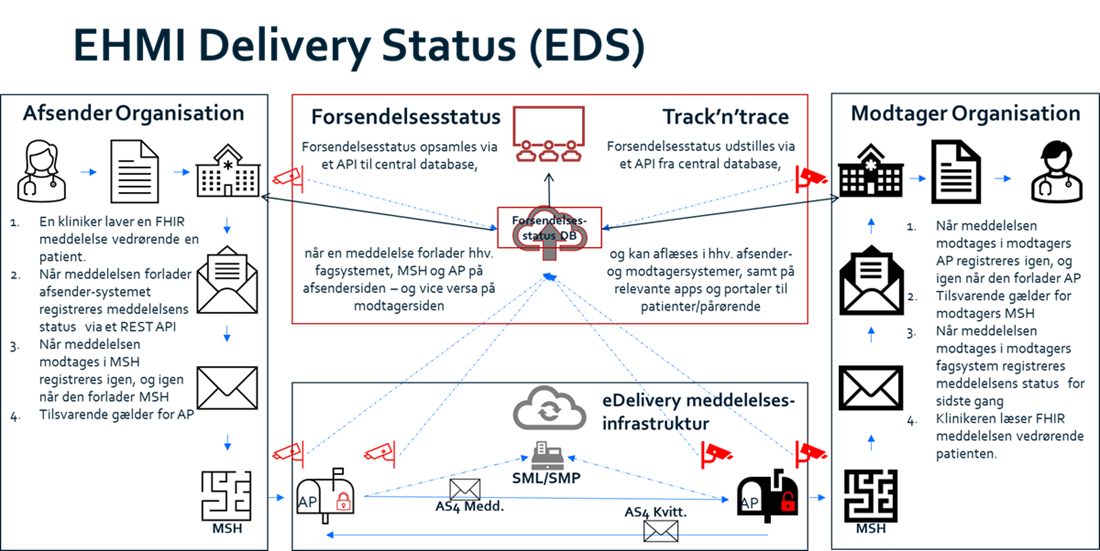EHMI Delivery Status (EDS)
0.9.0 - ci-build
EHMI Delivery Status (EDS)
0.9.0 - ci-build
EHMI Delivery Status (EDS), published by MedCom. This guide is not an authorized publication; it is the continuous build for version 0.9.0 built by the FHIR (HL7® FHIR® Standard) CI Build. This version is based on the current content of https://github.com/medcomdk/dk-ehmi-eds/ and changes regularly. See the Directory of published versions
| Official URL: http://medcomehmi.dk/ig/dk-ehmi-eds/ImplementationGuide/dk.ehmi.eds | Version: 0.9.0 | |||
| Draft as of 2024-04-25 | Computable Name: EHMIEDSIG | |||
The EHMI Delivery Status (EDS) Implementation Guide is a Content Profile that defines some basic and reusable logging patterns based on the FHIR AuditEvent Resource, that is used between an EDS device client and the EDS server.
EDS is inspired by IHE Basic Audit Log Patterns (IHE BALP) Implementation Guide, which is a Content Profile that defines some basic and reusable AuditEvent patterns.
A focus is on enabling Privacy centric AuditEvent logs that hold well-formed indication of message communication around a Patient, when they are the subject of messaging being recorded on the EDS Server.

EDS is using some basic abbreviations throughout the specification, the most common are:
EDS is used in the EHMI messaging flow like above
EDS is producsed in different scenarios basically as shown below.
As the EUA, MSH and AP can be built and hosted together in various ways, this is just the maximum possible scenarios, and the real scenarios will most likely by less than shown here.